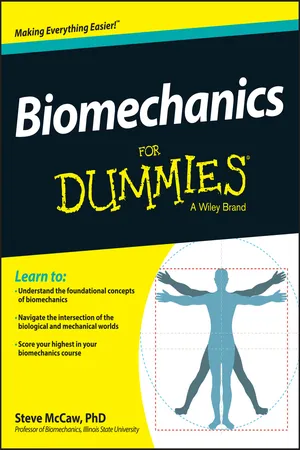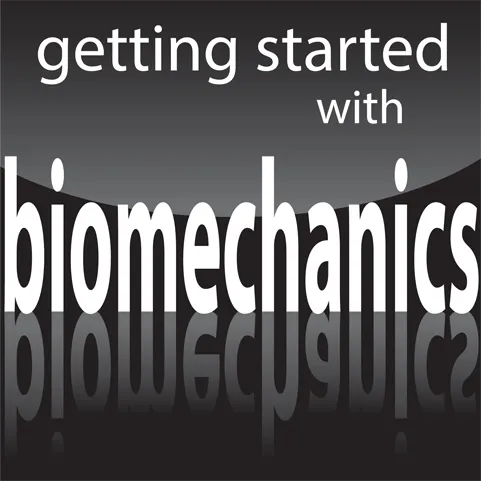
- English
- ePUB (mobile friendly)
- Available on iOS & Android
Biomechanics For Dummies
About this book
A thorough explanation of the tenets of biomechanics
At once a basic and applied science, biomechanics focuses on the mechanical cause-effect relationships that determine the motions of living organisms. Biomechanics for Dummies examines the relationship between biological and mechanical worlds. It clarifies a vital topic for students of biomechanics who work in a variety of fields, including biological sciences, exercise and sports science, health sciences, ergonomics and human factors, and engineering and applied science. Following the path of a traditional introductory course, Biomechanics for Dummies covers the terminology and fundamentals of biomechanics, bone, joint, and muscle composition and function, motion analysis and control, kinematics and kinetics, fluid mechanics, stress and strain, applications of biomechanics, and black and white medical illustrations.
- Offers insights and expertise in biomechanics to provide an easy-to-follow, jargon-free guide to the subject
- Provides students who major in kinesiology, neuroscience, biomedical engineering, mechanical engineering, occupational therapy, physical therapy, physical education, nutritional science, and many other subjects with a basic knowledge of biomechanics
Students and self-motivated learners interested in biological, applied, exercise, sports, and health sciences should not be without this accessible guide to the fundamentals.
Frequently asked questions
- Essential is ideal for learners and professionals who enjoy exploring a wide range of subjects. Access the Essential Library with 800,000+ trusted titles and best-sellers across business, personal growth, and the humanities. Includes unlimited reading time and Standard Read Aloud voice.
- Complete: Perfect for advanced learners and researchers needing full, unrestricted access. Unlock 1.4M+ books across hundreds of subjects, including academic and specialized titles. The Complete Plan also includes advanced features like Premium Read Aloud and Research Assistant.
Please note we cannot support devices running on iOS 13 and Android 7 or earlier. Learn more about using the app.
Information
Getting Started with Biomechanics

- Identify the “bio” and the “mechanics” parts of biomechanics.
- Get a refresher on the basic math and geometry skills you need to solve biomechanics problems.
- Discover a systematic approach to resolving or composing vectors using SOH CAH TOA.
- Understand the fundamental terms and concepts of biomechanics.
Jumping Into Biomechanics



Analyzing Movement with Biomechanics

Mechanics
Rigid body mechanics
Fluid mechanics
Deformable body mechanics
Bio
- Skeletal system: The skeletal system, including bones, ligaments, and joints, provides the physical structure of the body and allows for movement. (See Chapter 13.)
- Neural system: The neural system, also known as the nervous system, including different types of nerve cells, ...
Table of contents
- Cover
- Title Page
- Table of Contents
- Introduction
- Part I: Getting Started with Biomechanics
- Part II: Looking At Linear Mechanics
- Part III: Investigating Angular Mechanics
- Part IV: Analyzing the “Bio” of Biomechanics
- Part V: Applying Biomechanics
- Part VI: The Part of Tens
- About the Author
- Cheat Sheet
- More Dummies Products

